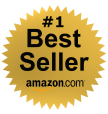Botox vs. Fillers: Understanding the Difference

Botox vs. Fillers: Understanding the Difference
In the ever-evolving realm of aesthetic enhancements, two popular options frequently stand out: Botox and fillers. Both are celebrated for their ability to rejuvenate appearances and combat signs of aging, yet they operate on distinct principles with unique applications. Understanding the disparity between Botox and fillers is crucial for anyone considering cosmetic procedures to achieve their desired look.
In this comprehensive guide, we delve into the nuances of these treatments, shedding light on their differences, similarities, and which might be the optimal choice for various cosmetic goals.
Whether you’re a newcomer navigating the landscape of cosmetic procedures or a seasoned enthusiast seeking clarity, join us as we unravel the complexities of Botox versus fillers.
The Science Behind Botox and Fillers: Mechanisms of Action
Botox and fillers may both be cosmetic treatments, but they operate on fundamentally different principles. Botox, short for Botulinum toxin, works by temporarily paralyzing the underlying muscles that cause wrinkles and fine lines. This paralysis reduces the appearance of dynamic wrinkles, such as crow’s feet and frown lines, by preventing muscle contractions.
On the other hand, fillers, typically made of hyaluronic acid or other substances, work by adding volume to specific areas of the face. By filling in wrinkles, lines, and hollowed areas, fillers restore youthful contours and smoothness. Understanding these distinct mechanisms of action is essential for choosing the right treatment to address your cosmetic concerns effectively.
Target Areas: Where Botox and Fillers Work Their Magic
Botox and fillers each have specific target areas where they excel in rejuvenating the face. Understanding these areas can help individuals choose the most suitable treatment to address their cosmetic concerns effectively.
Botox Target Areas:
- Forehead lines
- Crow’s feet (around the eyes)
- Glabellar lines (between the eyebrows)
- Bunny lines (on the nose)
- Platysmal bands (neck wrinkles)
Fillers Target Areas:
- Lips (lip augmentation)
- Cheeks (cheek augmentation)
- Nasolabial folds (smile lines)
- Marionette lines (lines extending from the corners of the mouth)
- Temples (temporal hollowing)
- Under-eye hollows (tear troughs)
Combination Target Areas:
- Jawline (jawline contouring)
- Chin (chin augmentation)
- Hands (hand rejuvenation)
- Earlobes (earlobe plumping)
- Nose (non-surgical rhinoplasty)
By consulting with a qualified injector and discussing individual goals, individuals can determine the most appropriate treatment areas and develop a customized plan to achieve their desired aesthetic results.
Duration of Results: Temporary Fixes versus Longevity
One significant difference between Botox and fillers lies in the duration of their effects. Botox typically provides temporary results, with its effects lasting anywhere from three to six months, depending on individual factors and treatment areas.
After this period, muscle activity gradually returns, and wrinkles may reappear, prompting the need for maintenance treatments. In contrast, fillers offer longer-lasting results, with effects often lasting anywhere from six months to two years or more, depending on the type of filler used and individual metabolism.
While fillers provide more extended relief from volume loss and wrinkles, they also require less frequent touch-ups compared to Botox. Understanding the longevity of results is crucial for planning and budgeting for future treatments accordingly.
Injection Techniques: Precision and Artistry in Administration
Administering Botox and fillers requires a delicate balance of precision and artistry to achieve optimal results. Skilled injectors must possess a thorough understanding of facial anatomy and employ precise techniques tailored to each individual’s unique features. Here are some key points highlighting the importance of injection techniques:
- Facial Mapping: A thorough assessment of the patient’s facial anatomy is essential to identify key injection sites and areas of concern.
- Injection Depth: Injectors must determine the appropriate depth at which to administer Botox or fillers to achieve desired outcomes while minimizing the risk of complications.
- Product Placement: Strategic placement of injections ensures targeted treatment of wrinkles, volume loss, or asymmetry, leading to natural-looking results.
- Muscle Dynamics: Understanding the movement patterns of facial muscles is crucial for administering Botox accurately, particularly in dynamic wrinkle areas like the forehead and around the eyes.
- Symmetry: Maintaining facial symmetry is paramount to avoid uneven results and ensure a balanced appearance post-treatment.
- Conservative Approach: Employing a conservative approach to injections helps prevent over-treatment and ensures that the final outcome aligns with the patient’s aesthetic goals.
- Artistic Touch: Injectors with an artistic eye can enhance facial features, restore youthful contours, and create harmonious results that complement the individual’s overall appearance.
By combining technical expertise with artistic skill, injectors can deliver safe, effective, and aesthetically pleasing outcomes that enhance the natural beauty of their patients.
Treatment Goals: Smoothing Wrinkles vs. Adding Volume
When considering Botox versus fillers, understanding the primary treatment goals is essential for aligning expectations with outcomes. Botox is primarily used to target dynamic wrinkles caused by repetitive muscle movements, such as frown lines, forehead wrinkles, and crow’s feet. By temporarily relaxing the underlying muscles, Botox smooths out these wrinkles and prevents them from becoming more pronounced over time.
In contrast, fillers are best suited for addressing volume loss and static wrinkles—the lines and folds that are present even when facial muscles are at rest. Fillers add volume to areas such as the cheeks, lips, and temples, restoring youthful contours and rejuvenating the overall appearance. By understanding the distinct treatment goals of Botox and fillers, individuals can choose the option best suited to their specific cosmetic concerns.
Natural Look vs. Frozen Features: Debunking Common Misconceptions
One common misconception about Botox and fillers is that they inevitably result in a frozen or overdone appearance. However, when administered by a skilled and experienced injector, both treatments can achieve natural-looking results that enhance rather than mask facial features.
Botox, when properly dosed and strategically placed, allows for subtle muscle relaxation, smoothing out wrinkles while preserving natural facial expressions. Similarly, fillers can restore lost volume and contours without exaggerating features or creating an artificial look.
The key lies in selecting a qualified practitioner who understands facial aesthetics and employs conservative techniques to achieve balanced and harmonious results. By debunking these misconceptions, individuals can feel confident in exploring Botox and fillers as options for achieving their cosmetic goals.
Safety Profiles: Risks and Considerations for Each Procedure
Safety is paramount when considering any cosmetic procedure, including Botox and fillers. While both treatments are generally safe when administered by trained professionals, it’s essential to be aware of potential risks and side effects. With Botox, common side effects may include temporary bruising, swelling, or drooping of nearby muscles if injected improperly.
Serious complications are rare but can occur if Botox spreads beyond the intended area or if the individual has underlying medical conditions. Similarly, fillers carry risks such as allergic reactions, infection, or lumpiness if not injected correctly.
Understanding these risks and discussing them with a qualified provider is crucial for making informed decisions about treatment. By prioritizing safety considerations, individuals can minimize potential complications and achieve satisfying outcomes with both Botox and fillers.
Ideal Candidates: Who Benefits Most from Botox versus Fillers?
Determining the ideal candidates for Botox and fillers involves considering individual concerns, treatment goals, and anatomical factors. Botox is typically recommended for individuals seeking to address dynamic wrinkles caused by muscle movement, such as forehead lines, crow’s feet, and frown lines.
It is also suitable for those looking to prevent the formation of deeper wrinkles over time. Ideal candidates for fillers, on the other hand, are often individuals experiencing volume loss, sagging skin, or static wrinkles—lines and folds present even when facial muscles are at rest.
Fillers can restore youthful contours, add definition to facial features, and plump up areas such as the lips and cheeks. By understanding the unique benefits of each treatment, individuals can determine which option aligns best with their cosmetic goals and concerns.
Cost Comparison: Budgeting for Your Cosmetic Goals
Cost is a significant consideration for many individuals exploring cosmetic procedures like Botox and fillers. When comparing the costs of Botox versus fillers, several factors come into play, including the type and amount of product needed, the expertise of the injector, and the geographical location of the practice.
Generally, Botox is priced per unit, with the total cost depending on the number of units required to achieve the desired results. Fillers, on the other hand, are typically priced per syringe, and the total cost varies based on the volume of filler needed and the specific areas treated.
While Botox may initially seem more affordable, it’s essential to consider the longevity of results and potential maintenance treatments. By budgeting accordingly and discussing pricing options with a provider, individuals can plan for their cosmetic goals effectively while ensuring quality and safety.
Combination Approaches: Maximizing Results with Botox and Fillers Integration
Combining Botox and fillers offers comprehensive facial rejuvenation by targeting wrinkles, volume loss, and asymmetry. Botox relaxes muscles, while fillers add volume, extending results and minimizing touch-ups. Working with a skilled injector is essential for tailored treatment plans, ensuring natural-looking enhancement. Armed with knowledge about these treatments’ mechanisms and safety considerations, you can confidently make informed decisions about your aesthetic goals.
Ready to start your journey to facial rejuvenation? Prioritize safety and expertise by consulting with a qualified injector who can develop a personalized treatment plan aligned with your vision. For pain-free beauty treatments and a trusted partner in your transformation, consider American Laser Med Spa.
Contact us at 915-760-5123 or Elpaso@americanlaser-medspa.com to schedule your consultation and embrace a more radiant you today!







